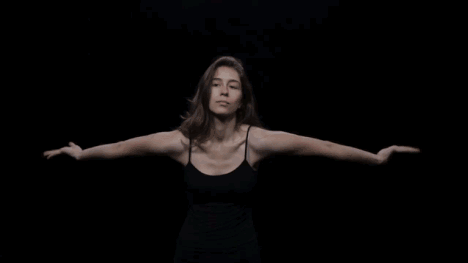I have type III Ehlers-Danlos syndrome (EDS), a condition that’s led to everything from breakups to dance championships. You’ve probably never heard of EDS. I’ve never talked with another patient or had access to a specialist. Nobody knows what it looks like, so nobody recognizes it when it’s right in front of their face. It’s the reason I stare down people sitting in the priority seats (seats reserved for seniors and people with disabilities) on San Francisco’s public transit system.
• What is Ehlers-Danlos Syndrome?
• What Are Common Ehlers-Danlos Syndrome Symptoms?
EDS affects connective tissue, which holds your body parts together like glue. If normal connective tissue is made of Superglue, then mine is made of Elmer’s glue. My joints are hyper-flexible, at risk of dislocating and frequently cause me pain.
Sometimes EDS weighs me down and makes me afraid I’ll fall apart — literally. The condition can lead to chronic pain, daily dislocations, wheelchair use and organ disfunction. But it’s also kind of magic. I think because my joints are so loose and provide such little resistance, they conduct sound well. It’s the only way to explain why I hyper startle, or jump so high when I hear unexpected sounds. It also means that I’m a good dancer, because when I listen to music, I actually feel the rhythm in every joint.
Why I dream of empty train seats
Though I’ve never pulled the EDS card for a seat, I have fantasies about doing so. What seems like a simple train ride is physically taxing for me.
Before I leave the house, I decide which shoes to wear by calculating how my hips feel, how far I’ll walk, how nicely I’m dressed and the likelihood that I’ll go dancing. If I walk more than four blocks in unsupportive shoes, my hips ache like rusty hinges and my feet burn. Standing and sitting up is draining because my joints are naturally loose, and it requires more energy to keep them taut. My limbs are tired by the end of the day.
When I board a train after walking a lot or a long day at work, I want to sit down. I’m unstable and I teeter. My shoulders get sore from swaying under the handrail. I’ve had one serious dislocation before, and I’m afraid one unexpected jolt could break my hip.
Why I’ve never asked for a seat
On San Francisco trains and buses anyone can sit in a priority seat until someone who needs it boards. When I’m sitting in a designated space and an in-need person approaches for a chair, I avoid eye contact and hope the young techie on his phone next to me will get up instead. If they don’t, I always move. I’ve never asked anyone to give me their seat. I’m afraid people will sneer because they don’t believe there’s anything wrong with me. But all I can think about when I’m seatless on the subway is how much I want to rest my joints.
Why can’t I just ask someone to get up? It’s because I associate these seats with being visibly disabled. Asking for one would cross a major barrier for me. I have a mild case of Ehlers-Danlos. But many of the other people afflicted with this disease live in braces, splints and wheelchairs — for them, it’s a much more serious disability. Because I am completely mobile, I don’t feel like I am disabled. One day I may, but for now, sitting on the train is a comfort, not a necessity. After I ask someone for a seat… Boom! I’ve become a person who needs the seat. I would think differently about myself. Maybe if I just think of them as “reserved seats” they’ll seem fancy and I’ll push for them. But for now, I’ll keep standing, in cautious and grateful acknowledgment of my abilities.

This blog was originally published on Medium.

